Polar Alignment of DWARF II TelescopeUpdated 2 months ago
This guide helps to polar align the DWARF II telescope.
This article was created by special invited contributor Victor Gabriel Trombotto.
1. Introduction
Telescopes in general can be considered to be composed of two main parts: optics and mount, both almost independent of each other, although some types of optics adapt better to a certain mount than others.
The mount of a telescope is what allows it to be oriented towards any part of the sky in search of the object to be observed and then it must be kept in its position with the greatest possible stability, allowing the smooth movements required for tracking without producing vibrations.
All mounts have something in common, they allow the telescope to move on two axes perpendicular to each other, giving it enough freedom to reach any point in the sky. Depending on the orientation of these two axes, we can classify them into two main types: equatorial (EQ) and altazimuthal (AZ).
Equatorial mounts allow the telescope to follow the movement of the stars, rotating only around one of their axes, called the Polar Axis because it is parallel to the Earth's axis of rotation, which passes through both poles.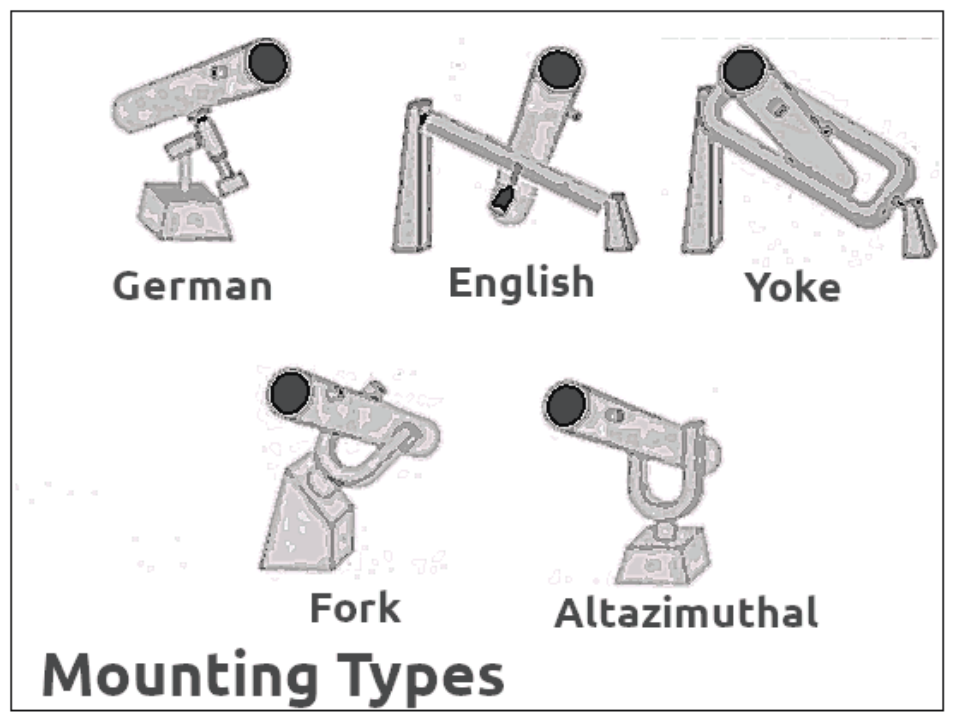
The second axis of the equatorial mount, perpendicular to the previous one, is called the Axis of Declination. The particular way in which said axis system is implemented in practice gives rise to a wide variety of equatorial mounts, among which we can highlight the German, the English, the Yugo and the Fork, each with its respective advantages and disadvantages.
For portable telescopes, all equatorial mounts have the drawback that they must be properly oriented before beginning to observe.
For their part, the Altazimuthal mounts are made up of a vertical axis (Azimuth Axis), which allows the telescope to rotate through 360º and a horizontal axis (Height Axis), which allows it to rotate between 0 and 90º, combining both movements the telescope can be directed in any direction. It is a very simple and robust mount, but it has the drawback that to follow a star, precise movements on both axes must be combined, with variable speed and direction.
Another important disadvantage of these mounts with respect to the equatorial ones is that it is difficult to determine the orientation of the field in the eyepiece or in the photographic image, in addition said orientation rotates as the telescope moves, making it difficult to obtain photographs of medium and long exposition.
2. The Dwarf II Smart Telescope
This telescope is a particular case in which optics and mount are closely integrated into a single body. In principle, the mount is of the altazimuth type, but with the great advantage that by simply modifying the orientation of its axes, it is easily transformed into an equatorial mount.
The control software automatically identifies the orientation of the telescope during the calibration procedure, requiring no additional adjustment.

2.1 Advantages and Disadvantages
None of the options is better or worse than the other, the important thing is to know that we have both possibilities and we can decide which one to use in each case.
The Altazimuth (AZ) position is simpler to use because it does not require any particular orientation of the telescope, and it is sufficient to rest it on a flat and approximately horizontal surface or mount it on a tripod with the head in a horizontal position.
The Equatorial (EQ) position requires a relatively precise north-south orientation of the telescope's azimuthal/polar axis of rotation and an inclination angle equal to the latitude of the location.
In this article, we will analyze how to make these adjustments.
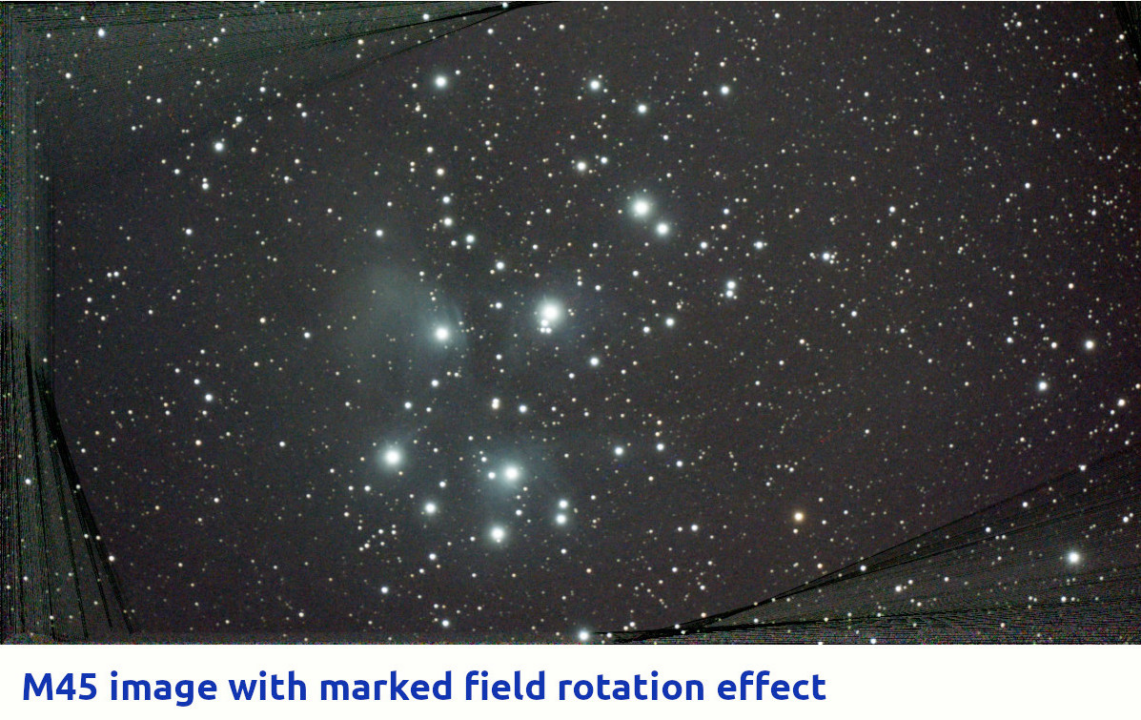
The main advantage of working in an Equatorial position is that field rotation is eliminated. The Dwarf II image processing software compensates for field rotation during image stacking, but deterioration of the edges of the final image is generated, the greater the exposure time and number of stacked images.
Another advantage of working in this position (EQ) is that the images will always maintain the same orientation, which makes it easier to identify objects in the image (North on top, East on the left in the Northern Hemisphere, and South on top, West on the left. in the southern hemisphere)


2.2 DWARF II Adjustment Procedure in Equatorial Position (EQ)
As we already mentioned, to work in the Equatorial position (EQ), a precise orientation of the telescope is required, the more precise the greater our requirement to reduce the effect of field rotation on the images.
If the equatorial orientation is only approximate, the telescope will work the same since the control software will detect its real orientation during the calibration process and make the corresponding corrections to achieve successful guidance, but the image obtained will still present a residual field rotation effect.
The first thing we must do is identify the Polar Axis of our telescope, which coincides with the axis of rotation of the telescope on its base (Azimuthal / Polar Axis in the figure).
This axis must point to the north or south celestial pole, depending on whether we are located in the northern or southern hemisphere respectively. This point coincides with the corresponding cardinal point (north or south) and is at an angle of height above the horizon equal to the latitude of the observation point.
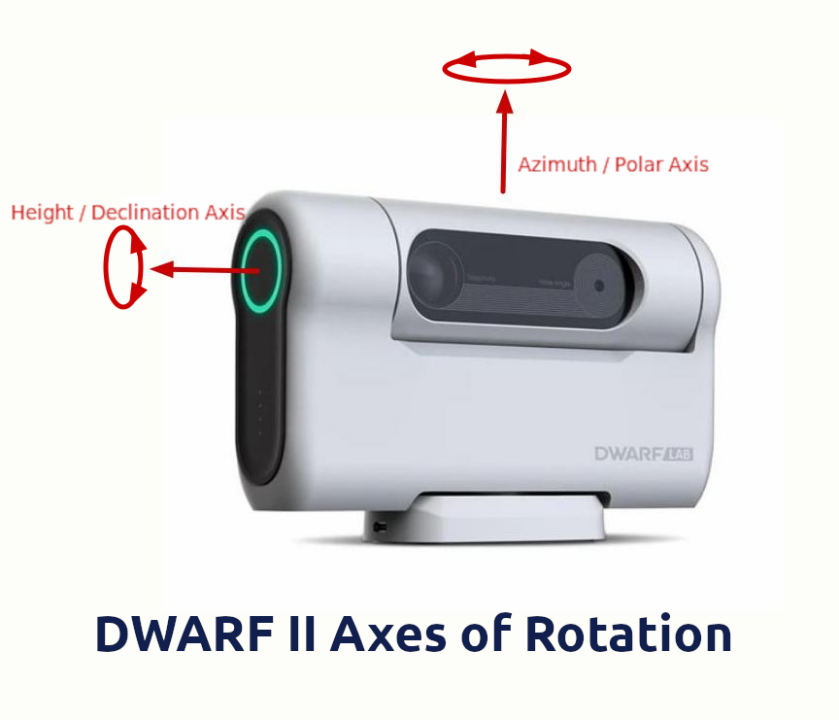 In the Northern hemisphere, there is the advantage of the star Polaris, which is visible to the naked eye (magnitude = 2) and is located very close to the north celestial pole (43 arc minutes).
In the Northern hemisphere, there is the advantage of the star Polaris, which is visible to the naked eye (magnitude = 2) and is located very close to the north celestial pole (43 arc minutes).
In the Southern hemisphere, it is more difficult to identify the celestial pole because there is no bright star close to it.
In any case, we can always count on other references such as the Southern Cross, the Magellanic Nebulae, and other circumpolar constellations.
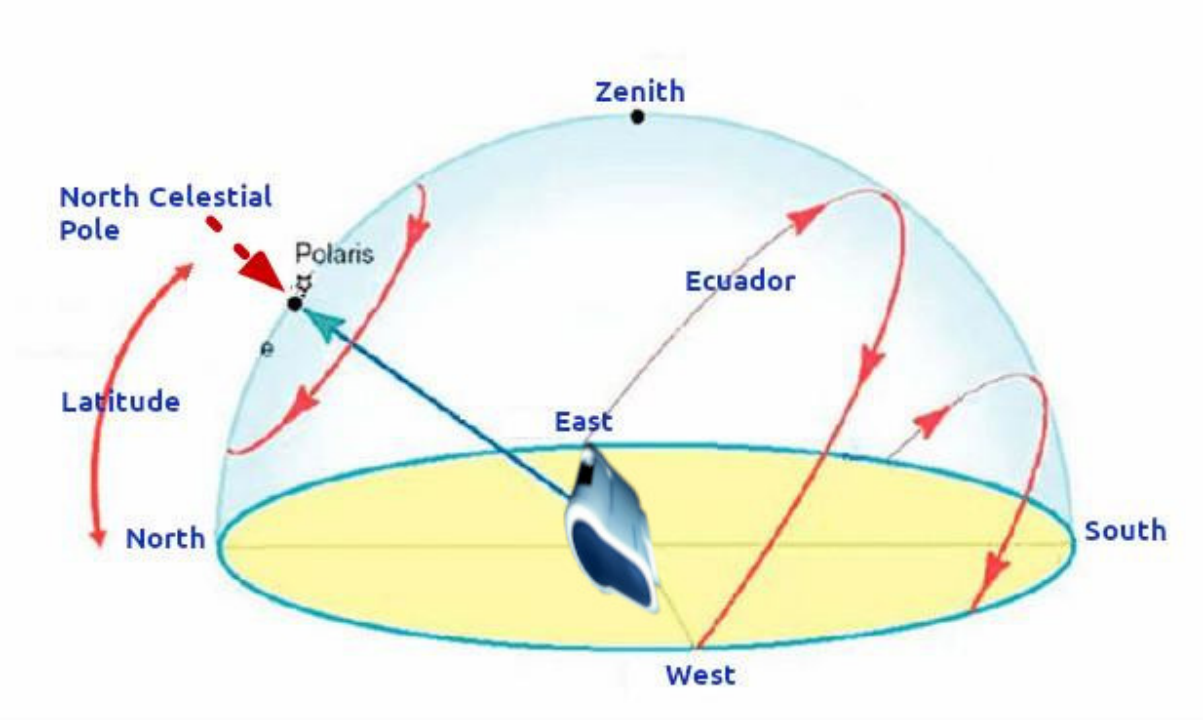 The simplest way will be to orient ourselves with a compass or with a cell phone application that fulfills that function (see the next point).
The simplest way will be to orient ourselves with a compass or with a cell phone application that fulfills that function (see the next point).
To measure the angle of elevation we can use a digital inclinometer or a cell phone application that fulfills that function.
For example, if we are in a place with latitude +32º (northern hemisphere), we must orient the telescope towards the north and with an inclination of 32º with respect to the horizontal plane.
If the latitude of the place is -32º (southern hemisphere), the telescope will be oriented towards the south and with the same inclination as the previous case.
In the particular case (unlikely) of being located at the north or south pole (latitude +90º or -90º respectively), the equatorial position of the telescope will be identical to the altazimuthal with the polar axis pointing in a vertical direction.
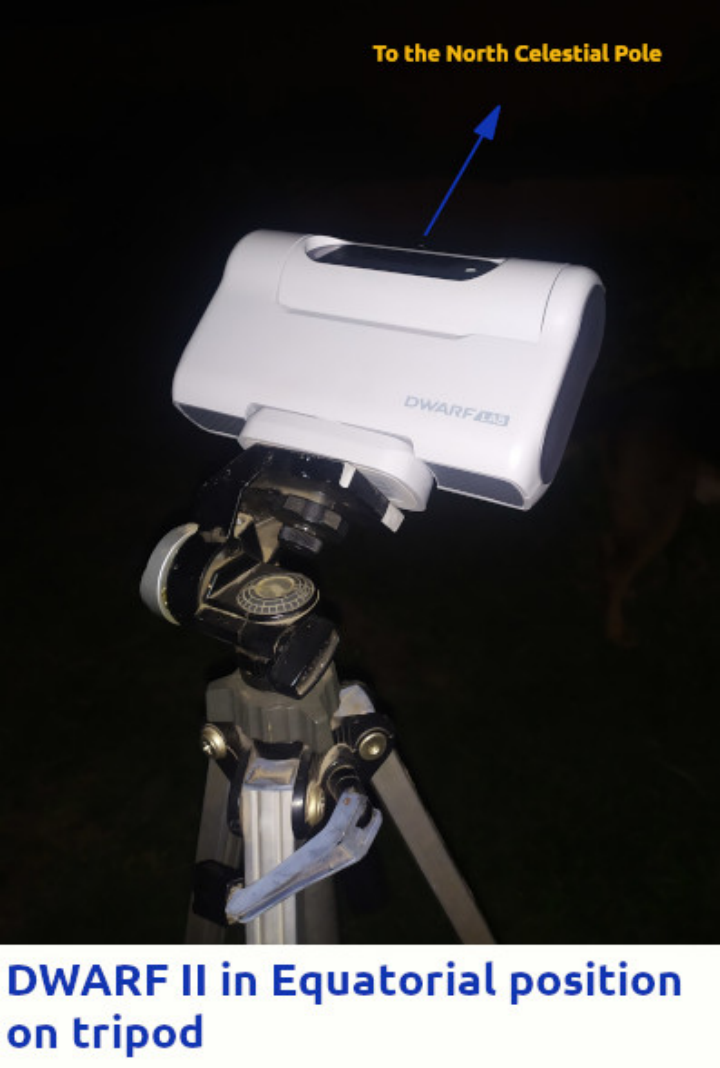 On the contrary, if we observe from an equatorial region (latitude 0º), the telescope will have its polar axis in a totally horizontal position.
On the contrary, if we observe from an equatorial region (latitude 0º), the telescope will have its polar axis in a totally horizontal position.
A laser pointer or a simple tube as a sight, attached to the side of the telescope will be of great help to point the telescope towards the polar star or the south celestial pole.
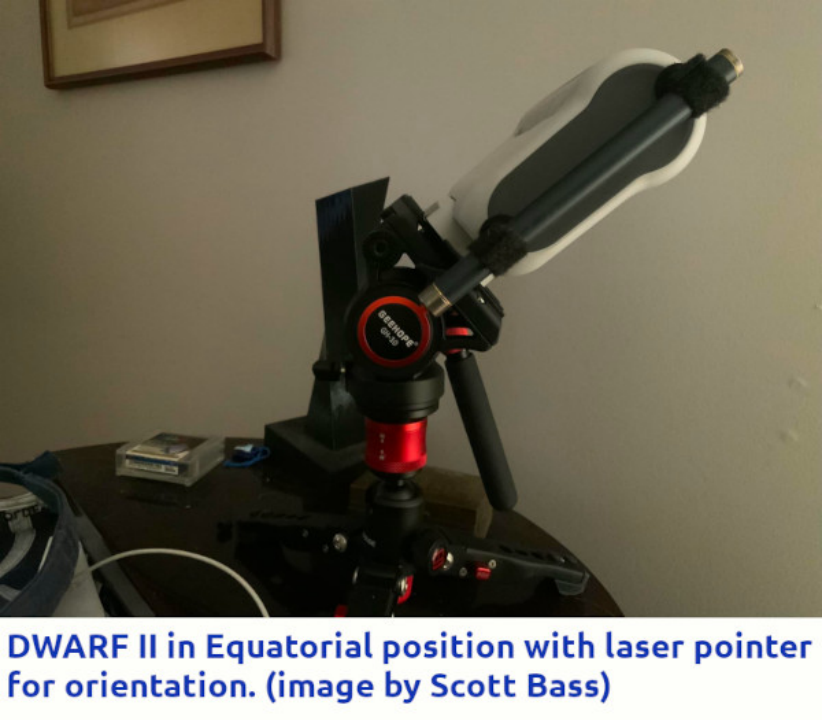
Another accessory that, although not essential, will make the task much easier is an equatorial mount, such as the one shown in the image. This device, in addition to facilitating orientation by always keeping the telescope at a certain inclination, will avoid subjecting the telescope to the effort involved in working with its polar axis inclined, especially when it comes to low latitudes.
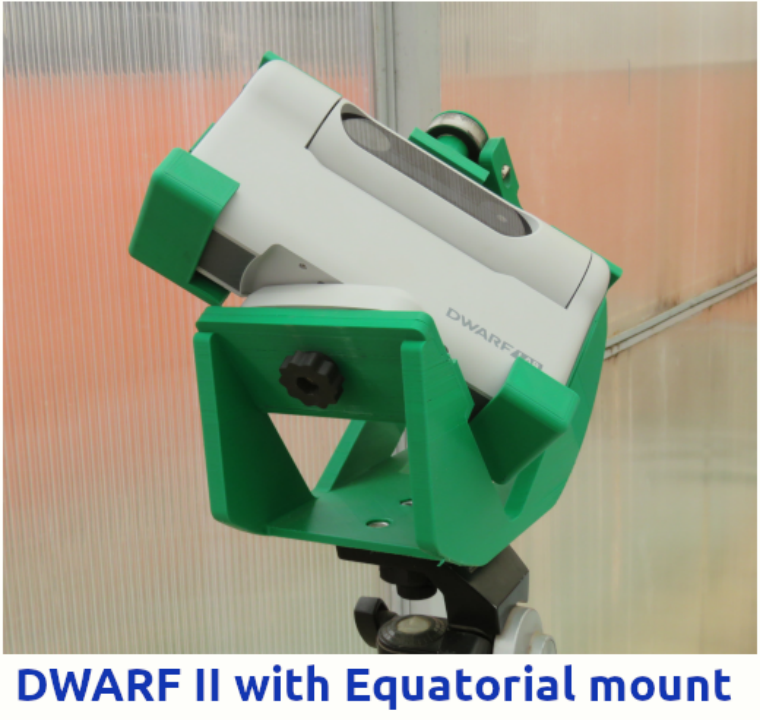
3. Magnetic declination
Measuring the cardinal points (north or south) with a compass or any other system based on the Earth's magnetic field requires certain precautions because otherwise, we can make large errors.
The geographic north pole and the magnetic north pole do not coincide and the angle that separates them is called magnetic declination, whose value is particular for each place on the planet and for each year since it changes over time.
Just as an isobar is a line that joins points of equal pressure, an isogon is a line that joins points of equal magnetic declination (from the Greek iso – gonios = equal angles). Magnetic cartography is based on charts where the magnetic declinations of the entire Earth's sphere are described by drawing isogonal lines. These cards are called isogonic cards.
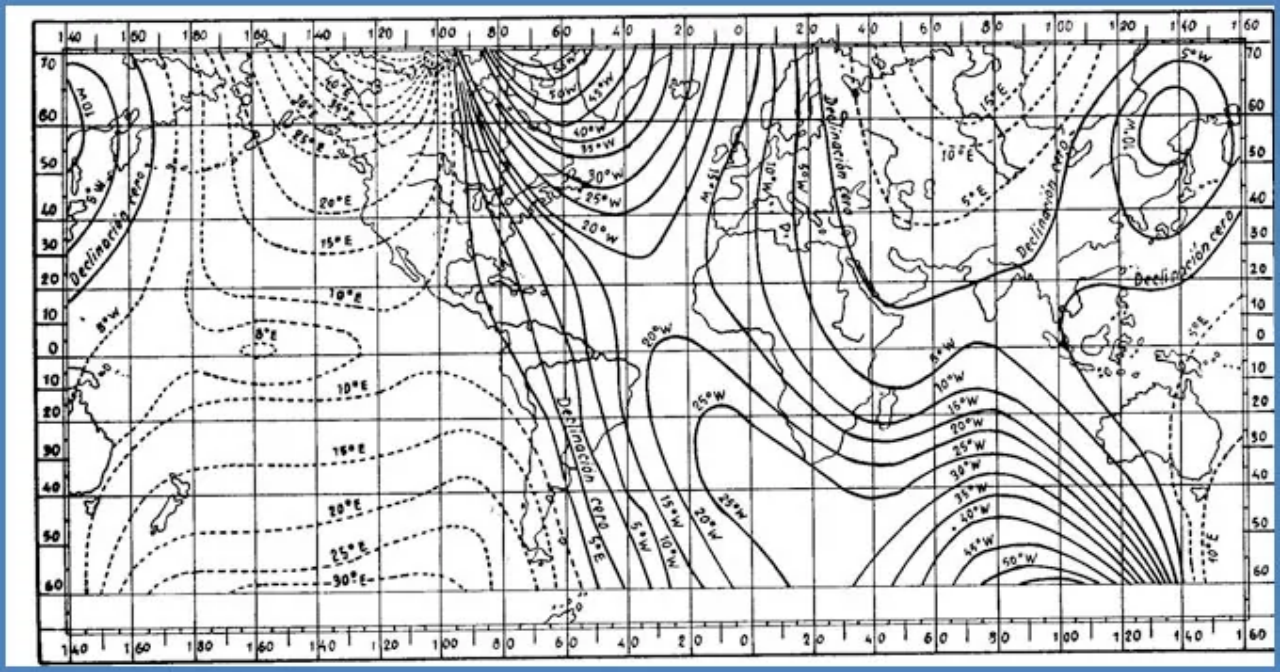
Magnetic declination can be calculated from a nautical chart. To know the value of the magnetic declination we must know that, if magnetic north is located to the right of true north, the magnetic declination is positive. On the other hand, if magnetic north is located to the left of true north, the magnetic declination will have a negative value.
It is important to consult up-to-date and reliable sources, such as nautical charts or navigation software, to obtain accurate magnetic declination at a specific location and in the corresponding year.
The following website allows you to consult the updated magnetic declination for any place on the planet https://www.magnetic-declination.com/
